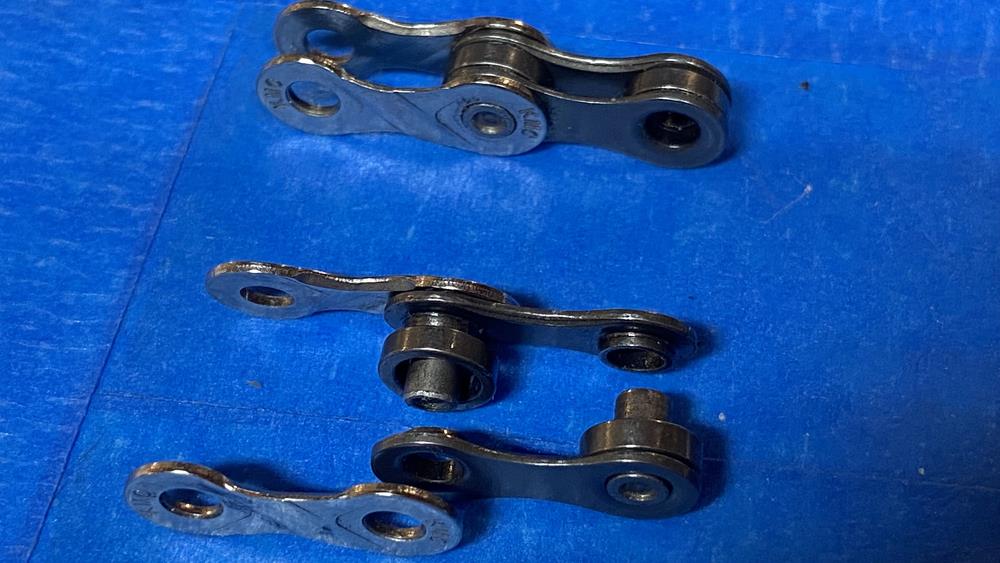Chains Anatomy
While the chain has been around since BC, the modern high precision roller chain used for bikes and countless other applications was not invented until the the late 1800's. The chain is one of the very few components on your bike that adheres to a standard. There are countless cassette, crank and derailleur types and brands, but what 'links' them all together is the standardized chain. Every bike chain has a standard half inch pitch between chain pins, no matter who makes it or whether it's 7, 8, 9,10, 11, 12 or 13-speed. It is this standard half inch pitch that defines the same half inch tooth spacing of everything the chain engages with - cassette cogs, chainrings and the derailleur jockey wheels. This standardization has enabled a plethora of interchangeable drive-chain components. Although the pitch is standard, chain width has narrowed to accommodate the closer gaps between cassette cogs as they evolved to 13 speed.
Here is what a chain link looks like disassembled into its component parts - 2 outer and 2 inner plates, roller bushing and the press fit pin that holds it all together:

Chain Stretch
Chains 'stretch' as friction causes the pin/roller bushing of each link to wear. This wear results in a small gap between each link's pin and its roller bushing. Adding up each link's wear gap over the length of the chain is the 'stretch.' Stretch is quoted as a percentage of the chain's original length. You'll sometimes see stretch referred to as elongation.

Checking Chain Stretch and When to Replace
There's no set mileage to replace a chain, there are too many variables - road vs gravel vs mountain bike, weather, hilly rides and your cleaning/lubrication frequency.
Although you can use a good ruler or calipers, the easiest way is to purchase a chain stretch gauge. It's a foolproof way to determine when it's time to replace your chain. The below Park CC-3.2 tool is simple to use, costing about $10. It's a 'no-go' gauge, meaning the chain is ok when the gauge does not fit. It has 2 gauges in 1, checking if your chain has stretched more than 0.5% or more than 0.75%.


- If the gauge does not insert at 0.5% setting, you're good
- If it inserts at 0.5% but not at 0.75%, check it regularly as you'll soon need to replace your chain
- If it inserts at 0.75%, fit a new chain ASAP
Check at 3 different positions on your chain, and use the worst case result.
What Happens if You Don't Replace a Stretched Chain?
Don't find out the expensive way! As the chain stretches, it causes the teeth of the cassette and chainrings to wear to match the stretched chain. This is bad news. Eventually, as the chain stretches more than 1%, shifting will not be crisp. Now when you replace just the chain, the profile of the excessively worn teeth of the cassette and chainrings won't match the new chain. You're now likely to have drive chain noise and poor shifting. The fix is an expensive replacement of the cassette and chainrings.
Bottom Line
- Buy a chain stretch tool and check your chain every few hundred miles
- Replace your chain as soon as it reaches 0.75% stretch
- Be aware of the factors that will accelerate drive train wear
- Grit, especially after a wet ride
- Rain washing out lubricant
- Hilly miles or pushing big gears
- Not lubricating your chain. Use a high quality wax-based dry lubricant such as Rock N Roll, Muc-Off, Finish Line or White Lightening
Photographs and words: Graham Rae
Chain stretch image: Baart Group